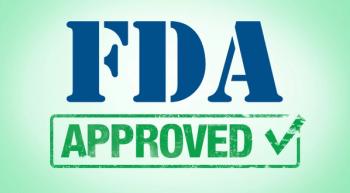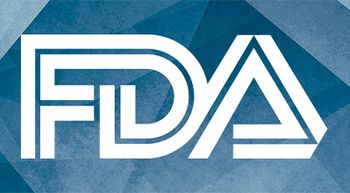
Pegfilgrastim-fpgk, a biosimilar medicine of pegfilgrastim, has received FDA approval for patients with non-myeloid malignancies and a clinically significant incidence of febrile neutropenia.


Pegfilgrastim-fpgk, a biosimilar medicine of pegfilgrastim, has received FDA approval for patients with non-myeloid malignancies and a clinically significant incidence of febrile neutropenia.

Donna Catamero, ANP-BC, OCN, CCRC, presented on her experience in expanding satellite clinical trial operations during the International Myeloma Society’s 6th Annual Nursing Symposium.

The nurse care pathway outlines best practices for monitoring, and responding to, pneumocystis jirovecii pneumonia risk in patients with multiple myeloma receiving novel, high-risk therapies.

Phase 2 findings from the CADENZA trial suggest that pivekimab sunirine may be effective against blastic plasmacytoid dendritic cell neoplasm, a rare and aggressive form of hematologic cancer.

Adding plinabulin to prophylactic pegfilgrastim and antibiotics may help prevent nonengraftment–related febrile neutropenia.

Findings of a retrospective analysis of patients with multiple myeloma showed that the median duration of treatment with daratumumab was 16.6 months.

Best management strategies for vancomycin infusion reactions may include premedication, infusion-rate adjustment, and, in some cases, alternative antibiotic therapy.

There is no one-size-fits-all approach to establishing patient-reported outcome measures, according to Hayley Beer, RN.

A post hoc analysis from the phase 2 DREAMM-2 trial highlighted the ocular toxicity risks that belantamab mafodotin poses for patients with multiple myeloma.

Investigators at Dana-Farber Cancer Institute are developing a virtual frailty assessment, which combines both patient-reported outcomes and standardized performance measures.

Pemigatinib has received FDA approval for relapsed or refractory myeloid/lymphoid neoplasms and FGFR1 rearrangement. Patients receiving pemigatinib will require monitoring for ocular toxicities and high phosphate levels.

Daniel J. Verina, DNP, RN, MSN, ACNP-BC, highlights optimal adverse event management with CD38- and SLAM-F7-directed monoclonal antibodies, XPO-1 inhibitors, and CAR T-cell therapies.

Through patient education tactics, oncology nurses can help patients with multiple myeloma mitigate the oral and dermatologic toxicities associated with talquetamab.

Leslie Smith, DNP, RN, APRN-CNS, BMTCN, AOCNS, discusses new therapies and treatment selection in the lymphoma landscape.

Betibeglogene autotemcel is the first FDA-approved cell-based gene therapy to treat adult and pediatric patients with beta-thalassemia who need routine blood tranfusions.

Stephanie Jackson, DNP, MSN, RN, AOCNP, BMTCN, discusses the trajectory of targeted and CAR T-cell therapies such as ivosidenib and brexucabtagene autoleucel, and what nurses need to know about these treatments to be able to practice at the top of their licensure.

Sherry Adkins, MSN, ANP-C, discusses some key considerations in ensuring quality patient care after they have completed CAR T-cell therapy at a specialized center.

Treatments options for various histologies of leukemia are expanding with FDA approvals for drugs such as the combination of ivosidenib/azacitidine and the CAR T-cell therapy brexucabtagene autoleucel.

The FDA has scheduled 3 sessions for the Oncologic Drugs Advisory Committee to review updates on the new drug application for poziotinib tablets and data for the continued approval of indications for melphalan flufenamide and duvelisib.

Sherry Adkins, MSN, ANP-C, discusses the significance of incorporating CAR T-cell therapy regimens, such as lisocabtagene autoleucel, into earlier lines of treatment for patients with relapsed/refractory large B-cell lymphoma.

In the modern era, the number of patients with diffuse large B-cell lymphoma who will derive benefit from autologous stem cell transplantation is small, according to Jeremy S. Abramson, MD, MMSc.

Gretchen McNally, PhD, ANP-BC, AOCNP, discusses the rationale behind a pilot study which will assess patient reported outcomes for patients with lymphoma who develop chemotherapy-induced peripheral lymphoma.

An expert with the Washington University School of Medicine in St Louis outlines the benefit of rituximab, and other maintenance therapies, for patients with mantel cell lymphoma who are in remission.

Phase 3 findings from the POLARIX trial showed that the addition of platuzumab vedotin to rituximab, cyclophosphamide, doxorubicin, and prednisone resulted in a 27% reduction in risk of disease progression, relapse, or death for patients with newly diagnosed diffuse large B-cell lymphoma.

A quality time without symptoms of toxicities analysis of the pivotal ZUMA-7 trial found that patients with relapsed or refractory large B-cell lymphoma experienced longer time without toxicity with axicabtagene ciloleucel than with standard of care.